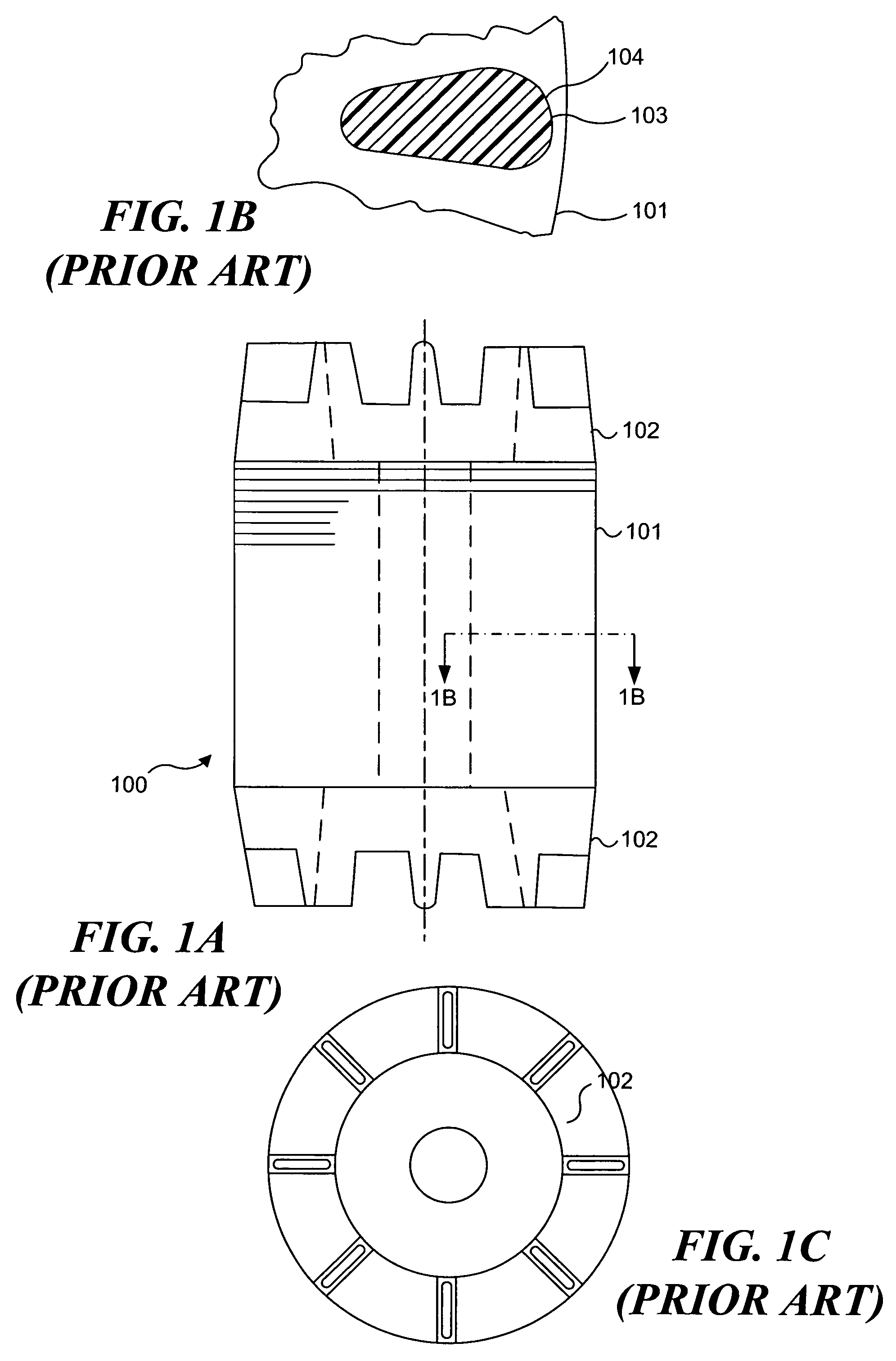Method for manufacturing squirrel cage rotor
a technology of cage rotors and cages, which is applied in the direction of rotors, synchronous motors,foundry moulding apparatus, etc., can solve the problems of high cost, no prior art insulation system provides ideal insulation for high efficiency, and neither enables effective consumable pattern casting of conductors with copper, so as to eliminate its organic content
- Summary
- Abstract
- Description
- Claims
- Application Information
AI Technical Summary
Benefits of technology
Problems solved by technology
Method used
Image
Examples
Embodiment Construction
[0035]A preferred embodiment of a conventional singly-fed induction machine squirrel cage rotor 200 with ceramic adhesive insulated slots, in accord with the present invention, is shown in FIGS. 3A, 3B, and 3C. Ceramic adhesive coating 204, which is applied on the inside surface of the closed slots in lamination stack 101, thermally and electrically insulates cast slot conductors 203 from the lamination stack. End rings 202 electrically connect all conductors 203 at each end of the rotor. Coating 204 provides substantial thermal insulation of the molten metal from the large mass of the steel lamination stack during the brief (about one second) casting period, but does not substantially reduce the transfer of heat from conductors 203 to the lamination stack during subsequent operation of the induction machine. Rotor 200 is generally identical to a conventional squirrel cage rotor, like that shown in prior art views of FIGS. 1A, 1B, and 1C, except that it includes ceramic adhesive coa...
PUM
| Property | Measurement | Unit |
|---|---|---|
| temperature | aaaaa | aaaaa |
| temperature | aaaaa | aaaaa |
| currents | aaaaa | aaaaa |
Abstract
Description
Claims
Application Information
 Login to View More
Login to View More - R&D
- Intellectual Property
- Life Sciences
- Materials
- Tech Scout
- Unparalleled Data Quality
- Higher Quality Content
- 60% Fewer Hallucinations
Browse by: Latest US Patents, China's latest patents, Technical Efficacy Thesaurus, Application Domain, Technology Topic, Popular Technical Reports.
© 2025 PatSnap. All rights reserved.Legal|Privacy policy|Modern Slavery Act Transparency Statement|Sitemap|About US| Contact US: help@patsnap.com



